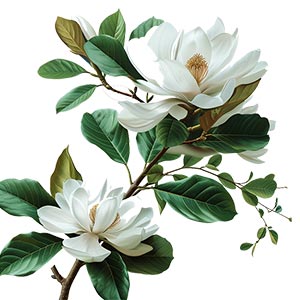White Magnolia is celebrated in perfumery for its luminous, creamy, and slightly citrusy floral scent. Originating from the magnolia flower, it offers a fragrance that is both elegant and comforting. Historically, magnolia has been a symbol of purity and nobility, and its use in fragrances can be traced back to ancient civilizations. In modern perfumery, White Magnolia is valued for its versatile aroma that combines floral elegance with a subtle freshness. It adds a refined and airy quality to fragrances, often serving as a heart note in both feminine and unisex compositions. The presence of White Magnolia in a fragrance blend lends a sophisticated and modern floral character. It pairs exceptionally well with other floral and green notes, adding depth without overwhelming the scent profile. White Magnolia's ability to impart a fresh yet opulent touch makes it a popular choice among contemporary perfumers.
Natural or Synthetic?
White Magnolia is utilized in both natural and synthetic forms due to various factors. The natural essential oil of White Magnolia, scientifically known as 'Magnolia grandiflora', is extracted typically through steam distillation or solvent extraction from the flowers. This process captures the delicate, floral scent. However, the extraction process can be costly and the yield low, leading to the use of synthetic alternatives. Synthetic versions, such as those developed using compounds like Anisyl alcohol, aim to replicate the scent of White Magnolia. These synthetics are used for reasons of cost-effectiveness, consistency in scent profile, and availability.
Fragrance Families White Magnolia Most Commonly Found In
Show fragrances that contain White Magnolia as a note


